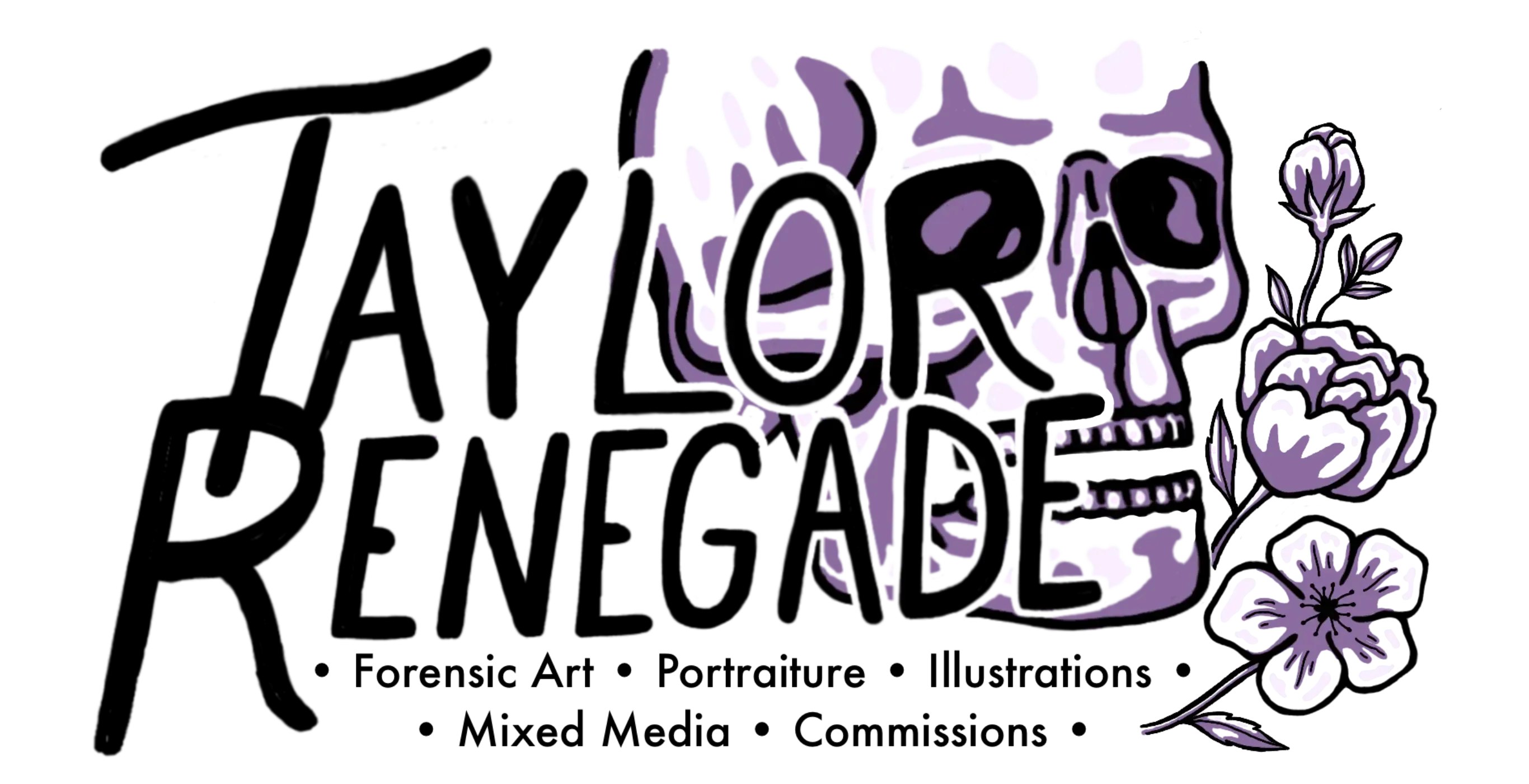A History of Misrepresentation; Centering Trans-Feminine Identities within Craniofacial Approximations (MSc Dissertation)
Year: 2024Materials: Geomagic Freeform, 3D Printed Models, Procreate, Adobe Illustrator, Acrylic Paint
In forensic science, the identification of human remains often relies on clear and binary categorizations, but often people's identities and senses of self cannot be contained to simple black-and-white answers. Moreover, this binary system fails to account for the complexities of transgender identities, posing significant challenges to identification. Sex estimation affects the language used to describe remains which in turn influences forensic art. Forensic artists, particularly those working in craniofacial approximations, strive to accurately recreate an individual's appearance to aid in their identification. To aid in a successful identification many different pieces of information are needed, and an omission or oversight can hinder this. This is further compacted by the fact that even when information about the transgender identity of an individual is made available to the forensic artist, there are no current standards for creating a trans-inclusive approximation. This, as well as a history of disregarding or lacking knowledge on these signs, can lead to inaccurate and disrespectful representations (Tallmana, Kincera, Plemons, 2021; Redgrave, 2018).
This project aims to propose new standards for conducting craniofacial approximations that respect and appropriately reflect trans-feminine identities. By applying masculine, feminine, and gender-neutral craniofacial approximation standards to the same male skull, the project will compare the outcomes and how these different gendered standards affect the final approximations. This will hopefully help establish guidelines for suspected trans-feminine remains; an identity that is underrepresented in current forensic standards and research.
